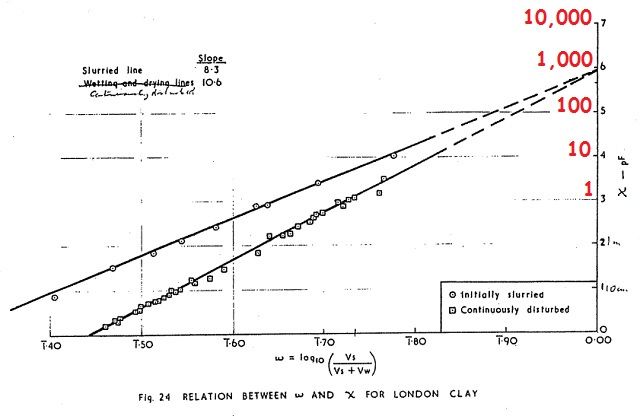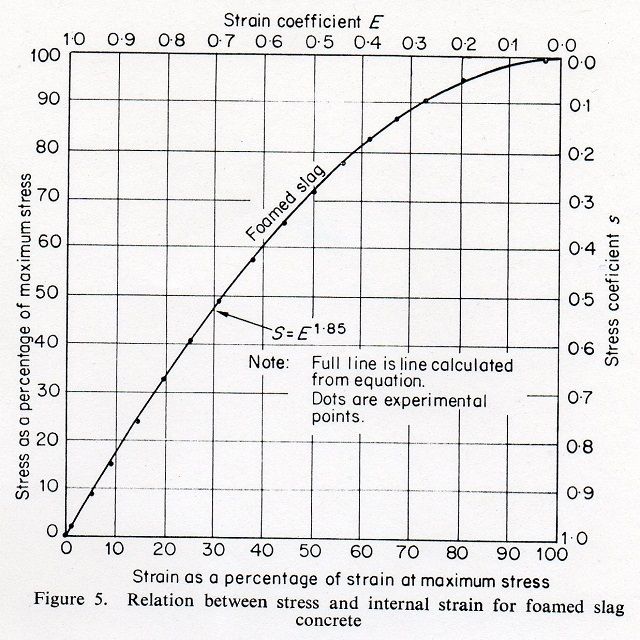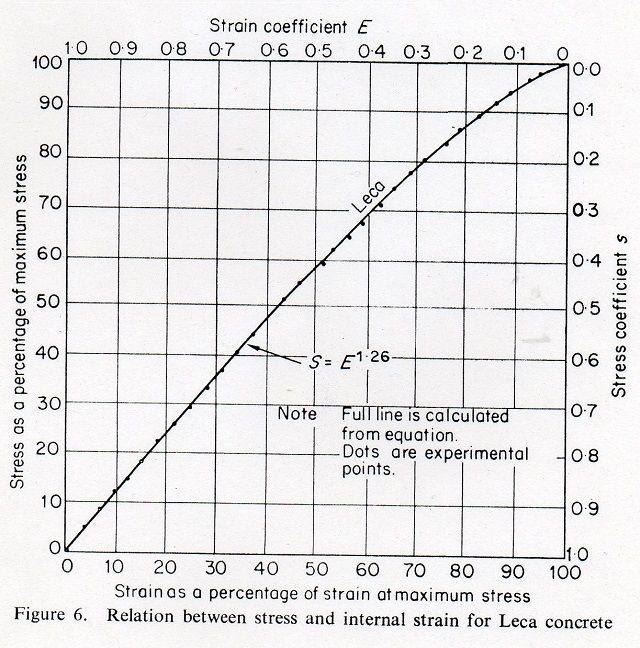Clays - possible environments for COLD FUSION.
Since pore water in clays can reach pressures below ambient of up to pF 7 it seems possible that using D2O in clay could be a candidate for cold fusion.
Has any research been done on this?
Has any research been done on this?
StephenC likes this.
****************************************************************************************************
Interesting idea… Should make for some interesting pottery. I wonder if anyone in the Ceramics industry has observed interesting phenomena after firing clays in their Kilns (Normally they are dried at this point though), especially with particular glazes slip/glazes and/or metal oxides included. Maybe interesting to check glazes of pots for element/isotope changes some day.
Do you know it those pressures are retained after the clays are dried… I suppose there is always some residual water in the clay. Using D2O in clay is an intriguing idea I think
They certainly are retained. That's what gives clays their strength.
In effect you have a natural prestressed concrete with the pore water in a state of tension and the clay mineral structure in a balancing state of compression.
When I worked at RRL there was a Section researching suction in soils lead by Dr Croney. I worked in the Soil Stabilization Section and my research led me to poach Croney, Coleman and Black's results and replot them as power relations thus revealing their significance.
Croney was very pissed off and delayed commenting on my note for 6 months until he was forced to disgorge.
To be fair to the Section Dr Coleman paid me a handsome compliment by saying:
"When I saw those graphs, Grimer, I nearly had an orgasm."
The note's probably down the memory hole by now but I kept a copy.
If you want an long read it can be found here:
besslerwheel.com/forum/files/ln_167_fjg.pdfLongview and StephenC like this.
Hi Frank.Certainly Alumina and Zeolites have been shown to be useful matrices for LENR, and are also a component in many types of clay. Here's a recent paper on the topic of Deuterium/Alumina.researchgate.net/publication/2…_a-alumina_coated_Eurofer
That's interesting. Thanks very much Alan.Longview likes this.
Since pore water in clays can reach pressures below ambient of up to pF 7 it seems possible that using D2O in clay could be a candidate for cold fusion.
Using the deuterium as heavy water rather that individual atoms seems more likely to be successful.
To draw an analogy, individual deuterium atoms are like pairs of wild horses charging around all over the place. An encounter with a second pair at the right orientation for the magnetic field to overcome the coulomb barrier has a low probability of success. Also, because the process is random there is a possibility of generating higher bursts of energy which are damaging.
Coupling the horses to the oxygen carriage means that the orientation can be controlled. Encounters are no longer random but can be organised by channeling the heavy water molecules along streamlines in the high pF regions between the clay minerals.
To achieve this one needs to choose the clay mineral which give the pore water a linear structure, i.e that of the ice vapour pressure phase which has the equation of state:
P = (((V)4)4)4
As you can see, the vapour in this state is under the first three orders of reduced Casimir compression.
Thanks very much for that, Alan.
I particularly liked this piece on the opening page.

In the above graph I've indicated in red the barometric pressure scale equivalent to Skempton's pF scale. Thus pF 7, the maximum pressure reached in clays represents a pressure of 10,000 atmospheres, or roughly 150,000 pounds per square inch.
It can be seen therefore that the maximum strength of clays is of the same order as the maximum strength of metals.
This goes to explain why the rheological properties of clays and metals are so alike - as Skempton recognised.
However, because the theory of the Casimir Effect was not sufficiently developed in his time he wasn't in a position to make the Gestalt switch of viewing the clay as being held together by external Casimir particle pressure rather than by internal fluid phase tension.
My Damascene conversion came about from my research on the stress-strain properties of concretes. I will explain this in more detail in a future post. It was only much later after the discovery of the equations of state for water vapour that I was able to reach a more detailed understanding of the external compression mechanism.



Research results for the properties of concrete as shown above convinced me that it was more useful to see materials as held together from external field compressions than from internal tensions.
I particularly liked this piece on the opening page.

I chose Science in the Green as a title to emphasise that these ideas are considered new, alternative, and largely unproven. They are therefore in the realm of fools. I will write of hardworking, conscientious, intellegent, trained academics, but they are considered to be fools. Personally, though sceptical by nature, I am entirely of an open mind as to the validity of many of their claims. Perhaps I am the greatest fool. Though I have a general science background, I am no specialist in anything of which I write. This web-site is merely an opportunity to share my efforts to understand some of the issues involved. As such it is, and always will be, a work in progress. It is very much about science in and of the green.

In the above graph I've indicated in red the barometric pressure scale equivalent to Skempton's pF scale. Thus pF 7, the maximum pressure reached in clays represents a pressure of 10,000 atmospheres, or roughly 150,000 pounds per square inch.
It can be seen therefore that the maximum strength of clays is of the same order as the maximum strength of metals.
This goes to explain why the rheological properties of clays and metals are so alike - as Skempton recognised.
However, because the theory of the Casimir Effect was not sufficiently developed in his time he wasn't in a position to make the Gestalt switch of viewing the clay as being held together by external Casimir particle pressure rather than by internal fluid phase tension.
My Damascene conversion came about from my research on the stress-strain properties of concretes. I will explain this in more detail in a future post. It was only much later after the discovery of the equations of state for water vapour that I was able to reach a more detailed understanding of the external compression mechanism.
Alan Smith likes this.
My Damascene conversion came about from my research on the stress-strain properties of concretes. I will explain this in more detail in a future post. It was only much later after the discovery of the equations of state for water vapour that I was able to reach a more detailed understanding of the external compression mechanism.



Research results for the properties of concrete as shown above convinced me that it was more useful to see materials as held together from external field compressions than from internal tensions.
Post was edited 2 times, last by “Frank Grimer” ().
An amusing incident early in my research career illustrates the kind of cognitive dissonance resulting from inverting one's view of things such as material strength.
=============================================================
To find the density of a piece of material one needs to measure two quantities. Its weight and its volume.
Finding the volume of a material is easy enough when the material is a simple shape; you just measure and use the appropriate maths formula.
When the material is irregular, like a roughly hacked piece of soil cement or a king’s crown, then there’s a problem as Archimedes realised. It is his method, or rather the inverse, which we used to find the volume of our soil-cement samples.
Archimedes’ discovery is often expressed as,
“The loss of weight in water is equal to the volume of water displaced.”
Strictly speaking, the loss of weight in water is equal to the weight of water displaced but since 1 cc of water weighs one gram we can jump directly from loss of weight to volume.
Using this principle the volume of a lump of stuff can be measured by
hanging it by a thin thread from one arm of a lever balance to measure its weight and then letting out the thread until it is immersed in a beaker of water when its weight is again measured.
The original weight is its weight. The loss in weight is its volume. So the original weight divided by the loss in weight is its density.
The Concrete Division were using just such a system for measuring the density gradients of core slices cut from concrete roads. Because Soils didn’t have a suitable lever balance we thought we'd be smart and do it differently. Using a pan balance we measured, not the loss in the weight of the specimen, but the gain in the weight of the water.
............
One day our Division Head, Dr.Maclean, was walking through the lab and he happened to see me holding one end of the thread and calling out the scale readings to my colleague.
He stood and watched for a while looking puzzled.
..........“What are you doing Grimer?”
..........“I’m measuring the volume of these soil-cement samples, sir.”
..........“But the volume is equal to the loss in weight of the specimen. You are ...........holding the end of the thread. How can you measure the loss in weight like that?”
..........“I’m not measuring the loss in weight of the specimen, sir. I’m
...........measuring the gain in weight of the water.”
...........“Are you sure you can do that, Grimer?”
His incredulity was so palpable that I almost started having doubts myself. It was like when your wife asks you for the third time if you turned the gas off when you left.
..........."Pretty sure. After all, the weight has to go somewhere, doesn’t it! It ............can’t just disappear.”
He walked slowly away looking very unconvinced.
In retrospect I can’t really blame him. When all your life you have been used to seeing a thing done one way, its very difficult to accept that it can also be done in the completely opposite way. Standing there holding one end of the thread with the specimen dangling in a beaker of water at the other it must have seemed as though I was engaged in some mystic rite of pendulum divination.
=============================================================
=============================================================
To find the density of a piece of material one needs to measure two quantities. Its weight and its volume.
Finding the volume of a material is easy enough when the material is a simple shape; you just measure and use the appropriate maths formula.
When the material is irregular, like a roughly hacked piece of soil cement or a king’s crown, then there’s a problem as Archimedes realised. It is his method, or rather the inverse, which we used to find the volume of our soil-cement samples.
Archimedes’ discovery is often expressed as,
“The loss of weight in water is equal to the volume of water displaced.”
Strictly speaking, the loss of weight in water is equal to the weight of water displaced but since 1 cc of water weighs one gram we can jump directly from loss of weight to volume.
Using this principle the volume of a lump of stuff can be measured by
hanging it by a thin thread from one arm of a lever balance to measure its weight and then letting out the thread until it is immersed in a beaker of water when its weight is again measured.
The original weight is its weight. The loss in weight is its volume. So the original weight divided by the loss in weight is its density.
The Concrete Division were using just such a system for measuring the density gradients of core slices cut from concrete roads. Because Soils didn’t have a suitable lever balance we thought we'd be smart and do it differently. Using a pan balance we measured, not the loss in the weight of the specimen, but the gain in the weight of the water.
............

One day our Division Head, Dr.Maclean, was walking through the lab and he happened to see me holding one end of the thread and calling out the scale readings to my colleague.
He stood and watched for a while looking puzzled.
..........“What are you doing Grimer?”
..........“I’m measuring the volume of these soil-cement samples, sir.”
..........“But the volume is equal to the loss in weight of the specimen. You are ...........holding the end of the thread. How can you measure the loss in weight like that?”
..........“I’m not measuring the loss in weight of the specimen, sir. I’m
...........measuring the gain in weight of the water.”
...........“Are you sure you can do that, Grimer?”
His incredulity was so palpable that I almost started having doubts myself. It was like when your wife asks you for the third time if you turned the gas off when you left.
..........."Pretty sure. After all, the weight has to go somewhere, doesn’t it! It ............can’t just disappear.”
He walked slowly away looking very unconvinced.
In retrospect I can’t really blame him. When all your life you have been used to seeing a thing done one way, its very difficult to accept that it can also be done in the completely opposite way. Standing there holding one end of the thread with the specimen dangling in a beaker of water at the other it must have seemed as though I was engaged in some mystic rite of pendulum divination.

=============================================================
Post was edited 2 times, last by “Frank Grimer” ().
Alan Smith likes this.